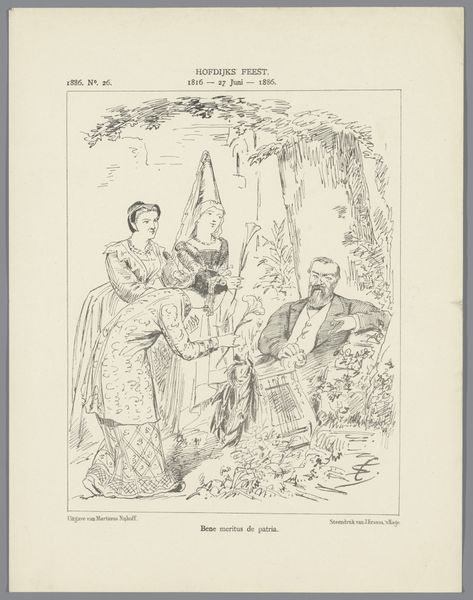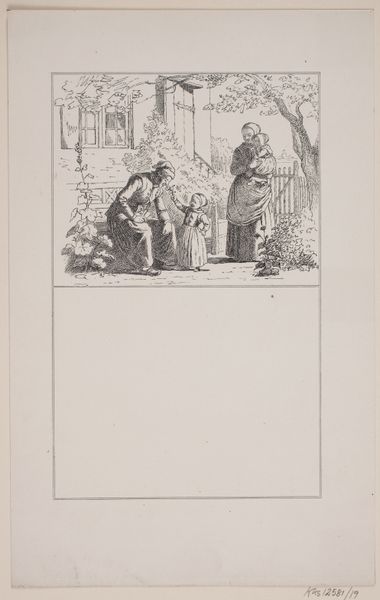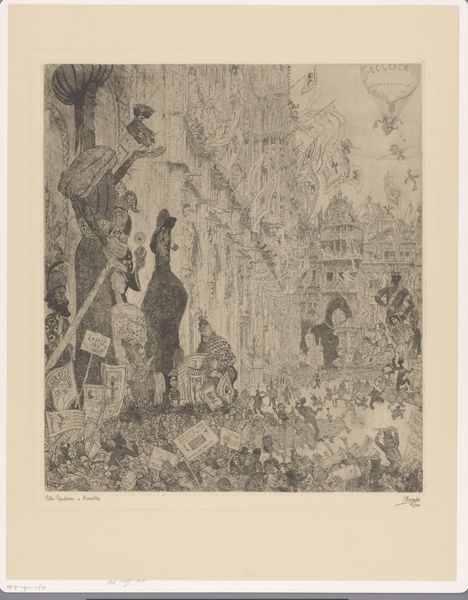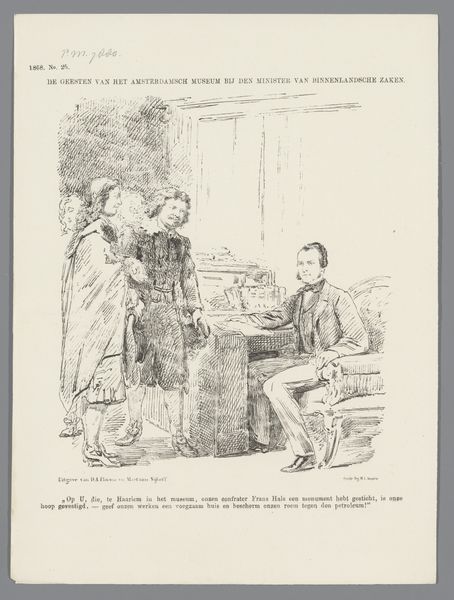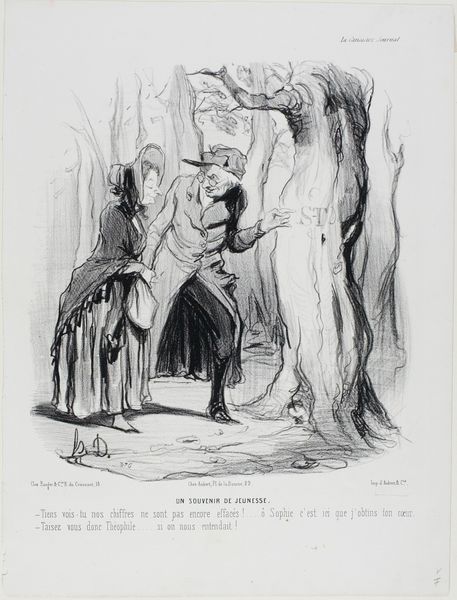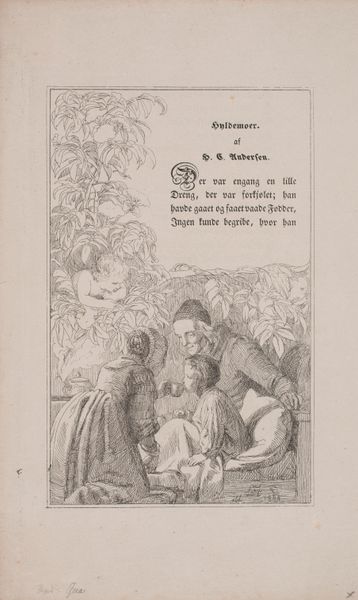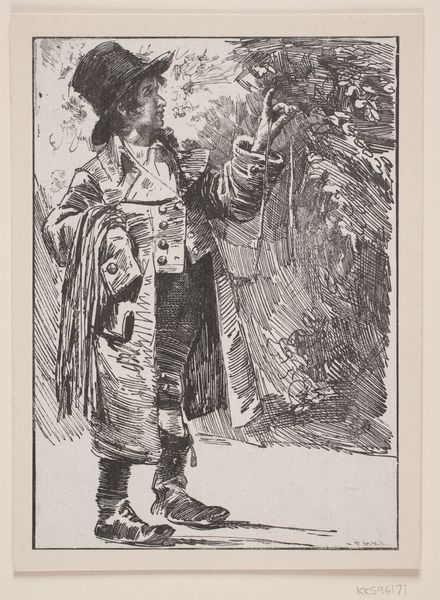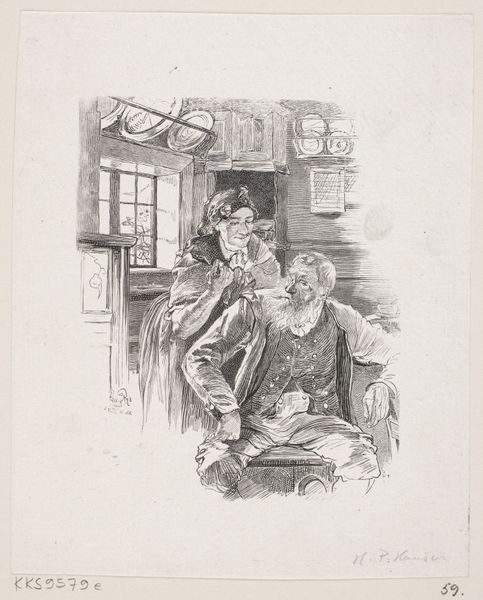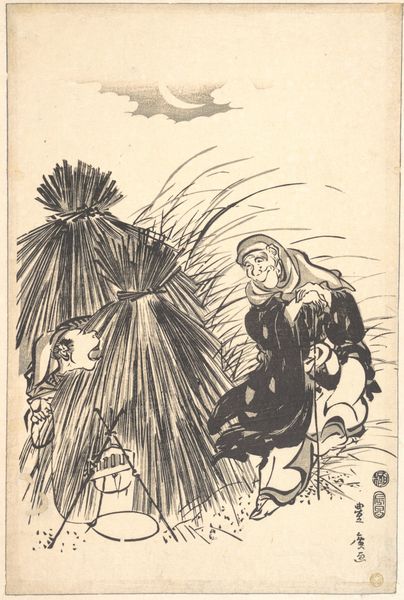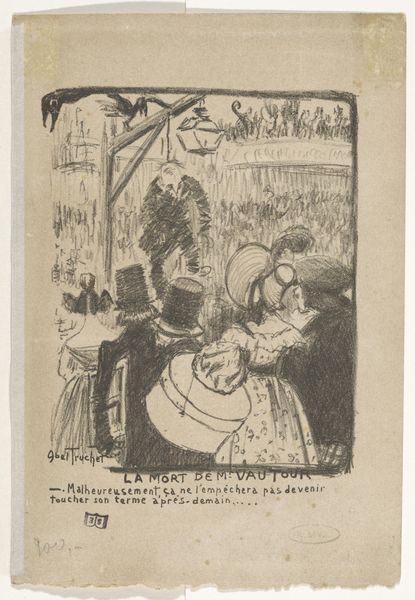
Herrscher, from the series Vom Tode Zweiter Teil 1870 - 1920
0:00
0:00
Dimensions: Plate: 19 5/8 × 13 5/16 in. (49.8 × 33.8 cm) Sheet: 21 15/16 × 15 15/16 in. (55.7 × 40.5 cm)
Copyright: Public Domain
Editor: So, here we have Max Klinger's "Herrscher, from the series Vom Tode Zweiter Teil," created sometime between 1870 and 1920. It's a very detailed print—etching and engraving, I think. I’m struck by the contrast between the central figures and the chaotic, almost grotesque crowd on the left. What do you see in this piece? Curator: I see a commentary on power, absolutely, but framed by its material construction. Klinger chose printmaking, a medium historically linked to mass production and dissemination, to depict this scene of elite privilege. Consider the labour involved in creating such a detailed etching, the physical exertion to impress the design. Doesn't that contrast sharply with the seemingly effortless authority of the rulers portrayed? Editor: That’s a fascinating point! The material process mirroring, almost mocking, the social structure represented. The precision etching contrasts with the almost caricature-like figures surrounding the rulers. Was Klinger implying that the "Herrscher's" power relied upon the distorted labour of others? Curator: Precisely! And the choice of print itself allows for reproduction and widespread circulation of this critique. Think about the consumption of such images at the time. Were they bought by the same elites being criticized or by a rising bourgeois class eager to dissect the old power structures? It's a circulation of power in itself. Editor: That adds a whole other layer. The work’s impact then depends so much on who is able to access it and how they would interpret his intent. It sounds like the art market played an important role in framing his criticism. Curator: Absolutely. By focusing on Klinger’s choice of medium, the labor involved in its making, and its role within systems of consumption and dissemination, we begin to unpack its complex engagement with societal power. Editor: I never would have looked at it that way on my own! Seeing art as material evidence, revealing details about production and labour really gives a new perspective. Thanks! Curator: My pleasure. Always good to remind ourselves that art, in itself, is labor, and its circulation is intertwined with systems of power, not separate from them.
Comments
No comments
Be the first to comment and join the conversation on the ultimate creative platform.
